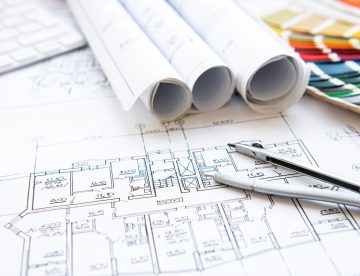
New rules that came into play this week mean that developers in England now have to deliver 10% Biodiversity Net Gain when building new housing, industrial or commercial developments.
This makes England the first country in the world to make Biodiversity Net Gain a legal requirement so take a look at this week’s blog to find out more about what this means and how it will be implemented.

On 6th September, Liz Truss formerly became the UK’s 80th Prime Minister, moving into number 10 Downing Street and no doubt inheriting an in-tray as high as some of London’s skyscrapers!
In her debut speech as PM, Truss talked about her vision for an “aspiration nation” characterised by tax cuts and business-led growth, and talked about three priorities – tackling the energy crisis, supporting the NHS and boosting the economy. Claiming her mission was to “get the UK working, building and growing’, the new Prime Minister gave little detail of how that might come about and interestingly made no references to net zero, nature or climate change.
With the construction industry facing economic challenges around rising costs plus labour and materials shortages alongside environmental challenges around emissions, energy efficiency and waste, industry leaders have been quick to react to the new PM’s appointment. In this week’s blog, we’re sharing what some had to say.

Across the world, people from all continents are witnessing the destructive effects of climate change – droughts, floods, wildfires, extended heatwaves. storms and crop failures.
When you consider this, alongside the rocketing increases in energy prices that’s causing many households and businesses to struggle with their bills, it’s clear that reducing the amount of energy we all use is now urgent – for both our planet and our purses.
One solution that we’re hearing mentioned more frequently within the construction world is the ‘Fabric First’ approach – changes that can be made when considering the design, construction and ‘fabric’ of a building to ensure it becomes energy efficient. In this week’s blog, we’ll tell you more.

After a couple of challenging years, many had big hopes that 2022 was going to offer the construction sector a slightly easier path. However, as we now know, the challenges have continued to rain upon our industry – not least of which have been issues around the availability and cost of materials plus labour supply.
More positively, the sector seems to have retained its ability to adapt and love of innovation and these are qualities that can be clearly seen in some of the current architectural design trends. From incorporating more natural lighting to introducing more efficient processes into projects, the design work that’s happening right now is surely leaving its mark on the homes of the future. Keep reading this week’s blog for some of the top trends we’ve come across…

As construction companies continue to face challenges around the supply and cost of materials, the Construction Leadership Council have got together with industry experts to launch a five-point plan to ease the impact.
While many of the factors causing the materials crisis are acknowledged to be outside the control of businesses, experts or even the government, the CLC’s plan seeks to co-ordinate an industry-wide effort to minimise risk and reduce the impact of inflation wherever that’s possible.
Keep reading for more on what’s causing this problem and what’s included in the plan.

The Construction Product Association’s latest Spring Forecast, published today, paints a mixed picture for the construction industry. On the positive side, the report is predicting that construction output will rise by 12.9% this year (and another 5.2% in 2022). However, it also highlights some significant risks to the sector’s recovery, most notably around shortages and high prices affecting key construction products. Take a look at this week’s blog to find out more about why getting hold of some of these products could prove tricky over the year ahead.

The use of asbestos in buildings has been banned in the UK for just over two decades but unfortunately the answer to the question of whether it still poses a danger is a definite YES. Asbestos is commonly found in buildings constructed before the ban and according to the Institute of Occupational Health and Safety…


